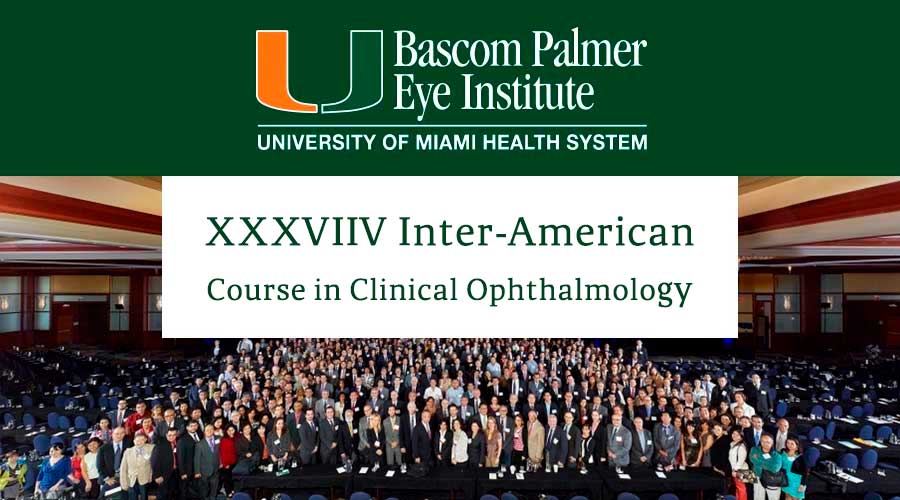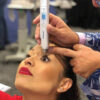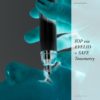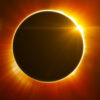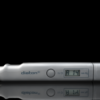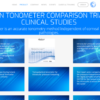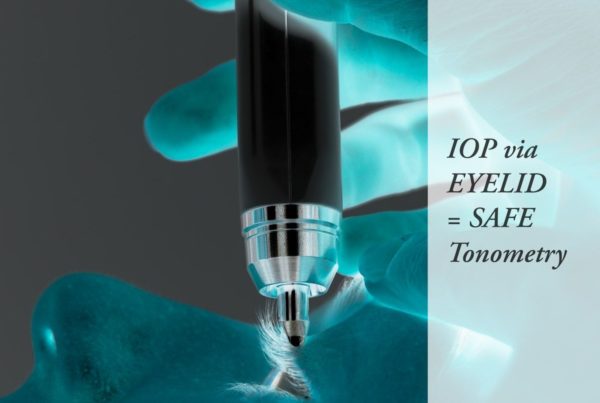Unique Transpalpebral and Transscleral Diaton Tonometer Featured at the Bascom Palmer Eye Institute XXXIX Inter-American Course in Clinical Ophthalmology.
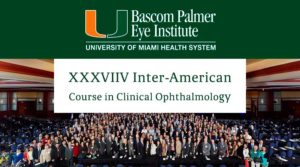
Many ophthalmologists were impressed by the unique capabilities of Diaton – which allows to obtain accurate IOP results in difficult to measure patients.
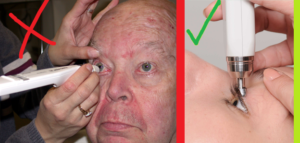
Non-corneal Diaton tonometer is particularly useful in cases where standard direct applanation (corneal) tonometry is difficult or not viable, such as with pediatric patients, in presence of certain corneal pathology, edema, infection, following corneal surgery, KPro and in cases of eye trauma.
Diaton tonometer allows to measure IOP through the upper eyelid and sclera. Unlike all other cornea dependent tonometry devices, IOP with Diaton is not influenced by known and still unknown biometric properties of the cornea. Pachymetry is not required to adjust the readings for the central corneal thickness (CCT), as with Diaton device, the operating principle and the technique completely eliminates the influence of the cornea. IOP is measured above the edge of the limbus, with Diaton tonometers tip placed on the upper eyelid at tarsus and sclera.
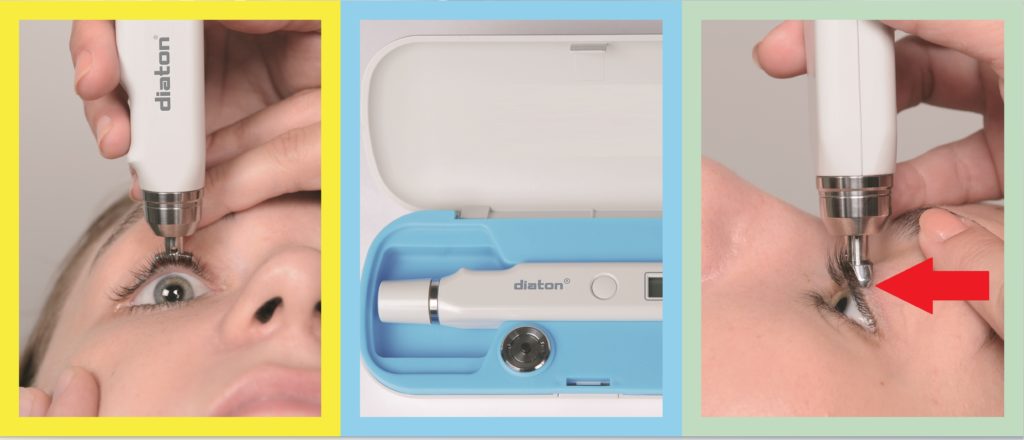
Goldmann applanation tonometry (GAT) is the gold standard for measuring IOP and most probably will continue to be so into the near future. However, its limitations were obvious from the start and include the substantial effects of several eye variables such as axial length, curvature, rigidity and corneal thickness. Also, in some eyes, especially those with corneal problems (such as diseases, trauma, haze, corneal opacities, leucomas, etc.) and surgery, taking measurements is not easy.
Thus the option of transpalpebral, scleral tonometry with Diaton tonometer makes it a more versatile tonometry option for practices that already have GAT and are seeking for a handheld, cornea independent readings.
Major Benefits of Diaton Tonometer:
- Easy to use. Can be used by any trained personnel
- No contact with the cornea (only upper eyelid and sclera)
- No need for anesthesia drops or removal of contact lenses
- Safe: No risk of infecting or scratching cornea (safer vs other methods)
- Cost efficient: No consumables (no need to purchase replacement tips, probes or covers, etc.)
- Latex-free, handheld, non-contact, portable, pen-like device
- No sterilization (just alcohol swab is used to wipe off the tip)
- Accurate: No pachymetry needed (independent of corneal biomechanics)
- Ready-to-use: Daily calibration not required (saves time)
Who Uses the Diaton Tonometer?
Diaton Tonometer (N477) is intended for use by Inpatient & Outpatient Clinics such as Hospitals, Emergency Rooms, Nursing & Elderly Homes, General & Specialty Practitioners as well as Ophthalmologists and Optometrists.
To find more information about Diaton tonometer, watch tonometry demo and training videos as well as clinical trials and testimonials from world renowned ophthalmologists visit: http://www.TonometerDiaton.com
To speak with Diaton Team or to place an order via phone dial: 1-877-342-8667

